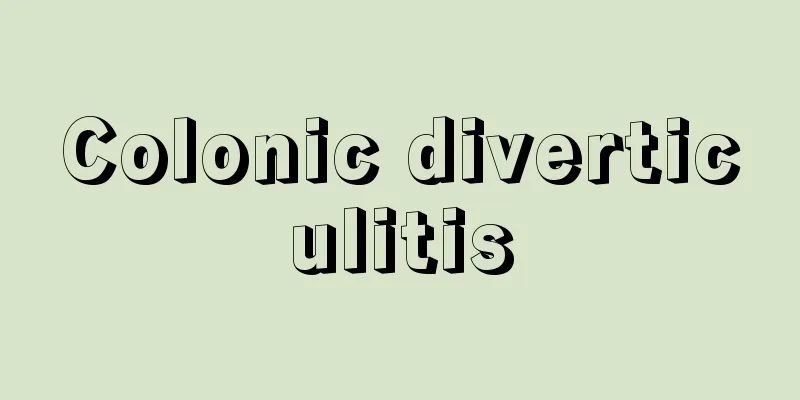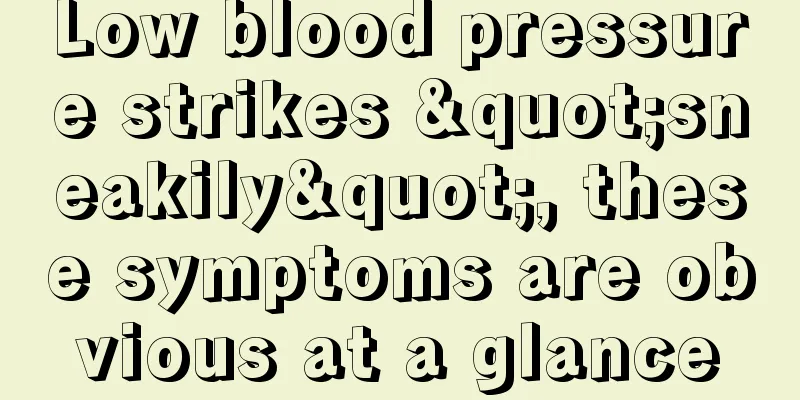Colonic diverticulitis

|
Nowadays, people’s daily work pressure and life pressure cause many people to work overtime and stay up late for work. Time is very important for young people. Many people often have irregular diets for work and do not have good living habits. Long-term overeating results in constipation. Long-term constipation has a great impact on human health. So what is colon diverticulitis? Colonic diverticula are pouch-like structures formed by the colonic mucosa protruding outward through weak areas of the intestinal wall. Poor diverticulum drainage may lead to diverticulitis, which can easily lead to perforation after inflammation occurs. This disease is more common in Europe and the United States, but rare in my country. Colonic diverticula can be divided into congenital and acquired. Acquired diverticula are more common and are more common in the left colon. Diverticula may be single or multiple. Causes 1. Diverticula may occur at weak points in the intestinal wall. 2. A low-fiber diet causes constipation, which increases intestinal pressure. 3. When the passage is blocked, the contents of the diverticula cannot flow into the intestinal cavity. Clinical manifestations 1. This disease mostly occurs in middle-aged and elderly people aged 50 to 70 years old, more often in women than in men. 2. Before the diverticulum becomes inflamed, most patients are asymptomatic, but sometimes may have mild symptoms such as constipation, abdominal pain, bloating, and dull pain and discomfort. Some patients have paroxysmal abdominal pain, which may disappear or worsen after a period of time. 3. In acute diverticulitis, the symptoms are mostly obvious. There is obvious pain on the left side or in the left lower abdomen, sometimes accompanied by nausea and vomiting, and elevated body temperature and white blood cell count. 4. The lesion is close to the bladder and may cause bladder irritation symptoms such as frequent urination, urgency, and pain when urinating. 5. After repeated attacks, it may present chronic symptoms, such as stubborn constipation, and some patients may have blood in the stool. Examination 1. Laboratory examination showed elevated white blood cell count. 2. If there is free perforation on the X-ray film, free gas can be seen under the diaphragm. 3. Abdominal B-mode ultrasound can show intestinal wall thickening and the presence or absence of surrounding abscess formation. 4. CT scan CT scan can show inflammatory manifestations of the fat around the colon. Fistulas and abscesses can be seen in almost all cases and are extremely helpful for diagnosis. 5. Barium enema may reveal the presence of diverticula or multiple diverticula. In diverticulitis, the intestinal wall is irregular and the intestinal tract is mildly and progressively narrowed. When diverticulitis is severe, examination is generally not recommended to avoid inducing intestinal perforation. 6. Fiber colonoscopy can reveal the presence of multiple diverticula and rule out other diseases, but fiber colonoscopy may induce perforation, so fiber colonoscopy is generally not recommended when diverticulitis is severe. Diagnosis 1. Confirm the presence of diverticula. 2. There is clinical evidence of inflammatory response. 3. Based on the location, physical signs, clinical characteristics, etc. of the diverticula, prove that the inflammatory reaction is related to the diverticula, or exclude other diseases other than the diverticula from being related to the inflammation. 4. Increased white blood cell count. 5. X-ray, barium enema, CT scan, etc. can help with diagnosis. Treatment 1. Non-surgical treatment (1) General treatment: Keep bowel movements regular and eat more high-fiber foods. When fistula or obstruction occurs, continuous gastrointestinal decompression, infusion therapy, and bed rest should be performed. Patients who experience pain during the acute phase should actively receive medical treatment. (2) Drug treatment: Broad-spectrum antibiotics combined with drugs effective against anaerobic bacteria, plus intravenous fluid replacement and nutritional support. Mild cases can be treated with oral antibiotics and bowel rest in the outpatient setting. 2. Surgical treatment can be performed for patients with poor abscess drainage, diffuse peritonitis, persistent intestinal obstruction or fistula formation, massive bleeding, etc. who have not responded to conservative treatment or who have repeated massive bleeding in a short period of time. |
<<: How to maintain beeswax bracelets
>>: What is interstitial colon disease
Recommend
Right temporal bone fracture
Right temporal bone fractures are often caused by...
Symptoms of rectal cancer patients at different stages
Rectal cancer can cause great trouble to people&#...
What are the early symptoms of nasopharyngeal carcinoma
Nasopharyngeal carcinoma has a certain understand...
How to shave jeans
Jeans became popular centuries ago, and even in m...
Why can't MSG be added to eggs
Many people like to eat scrambled eggs. Scrambled...
Foods that help with bowel movements and digestion
The effect of moisturizing the intestine and prom...
Total bilirubin 40
Total bilirubin is mainly composed of direct bili...
What causes swollen feet in late stage of nasopharyngeal cancer
What causes swollen feet in late-stage nasopharyn...
Is it necessary to remove the uterus for ovarian cancer?
Whether ovarian cancer requires a hysterectomy sh...
How often should I have a prenatal check-up after pregnancy?
The so-called prenatal check-up means a check-up ...
How to regulate manic-depressive psychosis
Manic-depressive psychosis is a relatively seriou...
Will iron supplementation turn stools black?
Supplementing iron is very helpful for the body t...
Taboos of red bean and coix seed powder
Everything has its advantages and disadvantages. ...
Is black sesame hot or cool?
Black sesame is a common food in our lives, becau...
The symptoms of liver cancer may be caused by the spread of the tumor
Most patients cannot detect the symptoms of liver...









